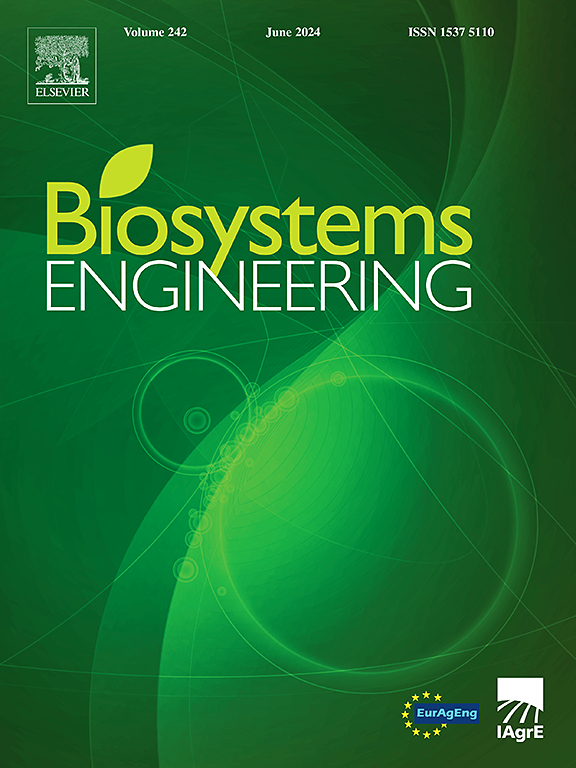Design and performance evaluation of notched type discs for application in no-till seeding process using discrete element method and field trials
IF 5.3
1区 农林科学
Q1 AGRICULTURAL ENGINEERING
引用次数: 0
Abstract
Improvements to soil-contact components are essential to minimise the negative impact of residual straw on high-speed planting. This study developed a soil-contact disc with a cutting-edge design based on an involute curve to replace traditional implements. Theoretical analysis was conducted for the process of cutting straw. Discrete Element Method (DEM) was employed to simulate the performance of four discs with different numbers of teeth, including 7 teeth disc (STD), 8 teeth disc (ETD), 9 teeth disc (NTD), 10 teeth disc (TTD), and two traditional discs (ND and CD) at and two rotation direction (FR and RR) at two speeds (10 and 12 km h−1). The results indicated that the NTD exhibited the largest performance improvement, including the straw management and soil resistance, and minimum soil structure disturbance. A comparison with traditional tools further validated the superior performance of the NTD. The disc with RR resulted in the minimum soil resistance and the optimum straw distribution than FR. Field trials with a planting platform equipped with the NTD and a straw-cleaning blade (SCB) were conducted, which demonstrated improved straw-cleaning efficiency, as well as lower coefficients of variation of plant spacing (ζa) and lateral deviation (ζc). This study provides a viable solution for straw removal from fields during high-speed sowing.
用离散元法和田间试验对免耕播种用缺口式圆盘设计及性能评价
改善与土壤接触的成分对于尽量减少残余秸秆对高速种植的负面影响至关重要。本研究开发了一种基于渐开线曲线的前沿设计的土接触盘,以取代传统的工具。对秸秆切割过程进行了理论分析。采用离散元法(DEM)对7齿盘(STD)、8齿盘(ETD)、9齿盘(NTD)、10齿盘(TTD)以及2个传统齿盘(ND和CD)和2个旋转方向(FR和RR)在2种速度(10和12 km h−1)下的性能进行了数值模拟。结果表明,NTD在秸秆管理和土壤抗性方面表现出最大的性能改善,土壤结构扰动最小。通过与传统工具的对比,进一步验证了NTD的优越性能。土壤阻力最小,秸秆分布最优。在配备NTD和秸秆清洗叶片(SCB)的种植平台上进行了田间试验,表明秸秆清洗效率提高,株距(ζa)和横向偏差(ζc)的变异系数更低。本研究为高速播种期间秸秆的清除提供了可行的解决方案。
本文章由计算机程序翻译,如有差异,请以英文原文为准。
求助全文
约1分钟内获得全文
求助全文
来源期刊

Biosystems Engineering
农林科学-农业工程
CiteScore
10.60
自引率
7.80%
发文量
239
审稿时长
53 days
期刊介绍:
Biosystems Engineering publishes research in engineering and the physical sciences that represent advances in understanding or modelling of the performance of biological systems for sustainable developments in land use and the environment, agriculture and amenity, bioproduction processes and the food chain. The subject matter of the journal reflects the wide range and interdisciplinary nature of research in engineering for biological systems.
 求助内容:
求助内容: 应助结果提醒方式:
应助结果提醒方式:


